The 2010 Census found that 1 in 5 people have a disability in the United States. According to the U.S. Census Bureau, 54 million people living with disabilities represent approximately $1 trillion in aggregate income that translates into more than $220 billion in discretionary consumer spending power!
Consumer Power
According to Charles A. Riley II and the International Center for Corporate Accountability, that consumer power adds up to more than the African‐American, Latino, and LGBTQ markets combined. The disability community’s consumer spending power is double the spending power of teens and more than 17 times the spending power of tweens (8‐ to 12‐year‐olds) –the two most highly sought after demographic groups. Does your business want a slice of this power demographic? Any smart business would and experts in the field now agree, to remain relevant and competitive in the changing market, companies must implement strategic diversity and inclusion strategies throughout their corporate infrastructure.
The disability community’s consumer spending power is double the spending power of teens & more than 17 times the spending power of tweens (8‐ to 12‐year‐olds) — the two most highly sought after demographic groups…
How Does a Business Tap into the Disability Market?
Opportunities for Community Development Finance in the Disability Market describes several ways to develop a comprehensive diversity and inclusion strategy that will affect all aspects of a company’s activities, from hiring to product design and marketing. There may be multiple ways to build an effective diversity and inclusion strategy, but one thing is very clear, companies must incorporate a robust marketing and communications plan as a central foundational element of any diversity and inclusion strategy.
How to Build an Unfair Advantage
Below are 10 strategies you can deploy now to target and engage the disability market. If you put these 10 simple strategies into action, your company will develop an “Unfair Advantage” over the competition — that means knowing how to do everything just a little bit better than your competition.
An unfair advantage is not lying, double-crossing, or larceny. It’s exactly the opposite. An unfair advantage is doing everything just a little bit better than your competition.
1) Go to the Source
When developing your marketing and communications plan, make sure to include people with disabilities on your marketing team. The best way to market to any demographic is first to understand your market. Who would know best what people with disabilities want and need than other individuals with disabilities. They will tell you what is most relevant to their needs so you can understand the issues-at-hand, map out strategies, and take appropriate action. If you don’t include people with disabilities on your marketing team, you can be sure of one thing — you will short-circuit, miss this market, and fail.
2) Support the Community
Make sure your company shows local community support for people with disabilities. Encourage members of your staff to attend City Council, City Planning, Mayor’s Committee for Persons with Disabilities, and other public meetings that have a relevant disability focus. Introduce yourself and your company publicly invite job seekers with disabilities to apply for open positions, encourage disability-owned suppliers to engage with your business, and ask people with disabilities to buy your products and support your company. Always provide a 3–5 bullet flyer that highlights your company’s equity and inclusion practices.
A business must have a marketing strategy and mechanism that builds a company’s brand as an inclusive workplace committed to equality, equity and inclusion for all. If you need help with creating a corporate culture of inclusion, please visit my company website: Darren Bates, LLC. Darren Bates, LLC is a disability-owned boutique consulting firm that specializes in helping public and private employers build the equity framework for creating workplace environments where all people feel valued, respected and inspired.

Create a positive company image and brand reputation for your business that says,“We support people with disabilities, older Americans, and Veterans — everyone is part of our business success.
3. Engage with Local Disability Organizations and Business Leadership Networks
Affiliate your company with local disability organizations that are working to ensure the success and independence of Americans living with cross-disabilities. Participate in your local Business Leadership Network, encourage your staff to volunteer at local non-profit organizations that focused on increasing employment opportunities for people with disabilities, e.g., Independent Living Centers, Aging and Disability Resource Centers, and non-profits that provide services to diverse populations. Keep in mind that volunteering increases your company’s involvement in the disability community, and your “disability‐friendly” efforts will attract the disability community’s attention and approval.
Tips About Those Pictures:
Ask yourself what specific communication strategies are needed to reach the disability community (e.g., working with community leaders, bulletin boards, community newspapers, social media). Consider how your communication materials will get out to the community organizations and networks that serve diverse populations. Make sure all mechanisms for communication are accessible and understood by the full diversity of your target audience. (e.g., plain language, accessible formats, graphics, multiple languages, both online and print, voicemail).
Always ensure that images represent the full diversity of your target audience and portray people in a positive way that makes everyone feel respected, valued, and inspired. Here’s an excellent example of when you should consider leveraging the diversity of perspectives and knowledge of your staff with disabilities and seek out “image and copy approval” from your local non-profit disability service providers.
Your company’s commitment to the disability community will itself become part of your brand message — creating a strong positive word‐of‐mouth, which can multiply on its own throughout the disability community by means of social media, blogs and list‐serves.
4. Know Your Customer
The basic building blocks of advertising and marketing make it essential to know who you are marketing your products to and who is buying them. Customers will shop and dine where they feel comfortable and purchase products that support their personal identity.
In 1996, Mattel scored with Share‐a‐Smile Becky (Barbie’s companion in a wheelchair). Just a few weeks after CNN aired its unusually lengthy two‐minute piece about the product launch, the doll was sold out. FMI: “Doll Diversity Isn’t Just Child’s Play — Dolls with Disabilities” at http://ollibean.com/doll-diversity/
5. Think Employment
This strategy is similar to #4 — but with a slightly different focus. As with any customer segment, the best way to tap into a demographic market is ensure your target audience is represented in your workforce and supply chain. Be proactive in your recruiting and hiring efforts and be sure to include people with cross-disabilities (different types of disabilities ). Doing so will benefit your company by adding value and various perspectives.
It is a fact that people with disabilities and their friends, family, and Allys are more likely to patronize a business that employs people with disabilities….

The American Association of People with Disabilities and Public Opinion Research Inc. report that more than 70 percent of members choose to buy from retailers that support people with disabilities, while a similar survey from the Center for Social Development and Education at the University of Massachusetts at Boston noted that 92 percent of participants with disabilities felt more favorable toward companies that employ individuals with disabilities, and 87 percent would give their business to those companies (Siperstein et al. 2006).
6. Build a Channel for Communication
Create an employee advisory committee, employee resource group consisting of people with and without disabilities and make it one of their goals to evaluate company-wide workplace accessibility. These groups offer employees an opportunity to network, address common issues and concerns, and receive support from those who share similar backgrounds, experiences, or interests.
7. Advertise Your Support
Make sure your company brand is inclusive by integrating people with disabilities in your advertising campaigns as models, actors, and spokespersons (Refer to Number 3 for Image Tips). Do not use a model acting as s/he is a person with a disability — epic fail! Just ask one of those Kardashian/Jenner kids.
8. Advertise in Disability Media
Reach out to customers with disabilities through various disability publications and through your company’s social media platforms. Today the buzz is spread through social media (e.g. Facebook, Twitter, Instagram) and your company’s social media voice and platform should include disability‐forward thinking and disability topics as a way to build brand loyalty and interest.

Recent statistics tell us that 1 in 5 people in the US has a disability, but 1 in 3 people know someone with a disability. By placing a person with a disability in your advertising materials, you are speaking very loudly to the disability community. By the way, this doesn’t cost extra money. Simply cast actors and models with disabilities. The message you send will say, “your company is committed to inclusion …all people matter and all people with different abilities are welcome here.”
9. Advertise in the Mainstream Media
Reach out to customers with disabilities through mainstream advertising. One in five people in the US are living with a disability — and if you add their “Allys” that number dramatically increases.
6 ways to be a better ally to people living with disabilities
When it comes to talking about disability, we don’t. Nearly one in five Americans reports living with a disability, yet…
I am an Ally when…
- I listen.
- I am aware of my own advantages and disadvantages and how I can use them to make a difference.
- I check my assumptions so as to unlearn biases and stereotypes.
- I stand beside and walk with others.
- I speak up against hurtful comments or insulting action, rather than wait for others to point it out.
- I take steps to make the workplace and services inclusive, safe and welcoming.
- I help others to understand discrimination and exclusion.
- I avoid the trap of “knowing what is good for them” and instead encourage their leadership.
- I share power.
- I realize that being an ally requires on-going learning.
- I listen some more
(Courtesy of Equity and Inclusion Handbook)
“A comprehensive diversity strategy will ultimately affect the very culture and future success of your business… EY’s research consistently shows Differences present opportunities. Inclusiveness drives results”
Karyn Twaronite, EY Americas Inclusiveness Officer,
Senior Partner of Ernst & Young LLP
10. Always Think Diversity and Inclusion — Simply Ask Yourself -3- Questions
To tap into the multibillion-dollar disability market, your company must remain competitive and keep its business approach relevant to people with disabilities and their Allys.
- Who is not included in the work you do?
- What could contribute to this exclusion?
- What can you do differently to ensure inclusion?
Source: Medium

